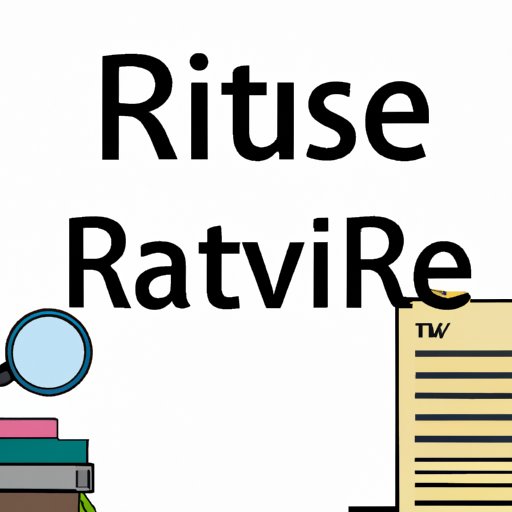Introduction
A review of literature is an organized compilation of published material on a specific topic. It can also be referred to as a systematic review or a literature survey. The purpose of the review is to synthesize existing research on the topic and identify gaps in knowledge that need to be explored further. The scope of the review should be determined by the focus of the review and the audience for whom it is written.

Identifying Key Terms and Concepts
The first step in writing a review of literature is to identify key terms and concepts related to the topic. This involves defining the terms and understanding the context in which they are used. For example, when discussing the effects of climate change on agriculture, terms such as “greenhouse gases” and “carbon dioxide” would need to be defined and their relevance to the topic explained.
Gathering Relevant Literature
The next step is to gather relevant literature. Sources of relevant literature include academic journals, books, websites, and other online resources. When looking for sources, it is important to use reliable and reputable sources and to make sure that the information is up-to-date. Additionally, it is important to consider the audience for whom the review is being written and to use sources appropriate for that particular audience.

Analyzing and Evaluating the Literature
Once the relevant sources have been identified, it is important to evaluate the quality of the sources and extract relevant information from them. This includes assessing the credibility of the sources, evaluating the evidence presented, and considering the arguments made. For example, when discussing the effects of climate change on agriculture, it would be important to look at studies that examine the impact of climate change on crop yields and agricultural production.

Organizing the Review in a Logical Structure
The next step is to create a strong thesis statement and develop a logical structure for the review. The thesis statement should provide an overview of the main points of the review, while the structure should be organized in a way that makes the most sense for the topic. For example, when discussing the effects of climate change on agriculture, it may be useful to organize the review into sections on crop yields, water availability, soil fertility, and pest management.
Summarizing and Drawing Conclusions from the Review
Finally, it is important to summarize the main points of the review and draw conclusions from it. This involves summarizing the key findings of the review and highlighting any gaps in knowledge that need to be further explored. According to a study by Manaka and colleagues, “a literature review should provide a comprehensive overview of the current state of knowledge on the topic, discuss the strengths and weaknesses of existing research, and suggest directions for future research efforts” (Manaka et al., 2018).
Conclusion
Writing a review of literature requires identifying key terms and concepts, gathering relevant literature, analyzing and evaluating sources, organizing the review in a logical structure, and summarizing and drawing conclusions from the review. By following these steps, it is possible to effectively write a review of literature that is both informative and engaging.
(Note: Is this article not meeting your expectations? Do you have knowledge or insights to share? Unlock new opportunities and expand your reach by joining our authors team. Click Registration to join us and share your expertise with our readers.)
